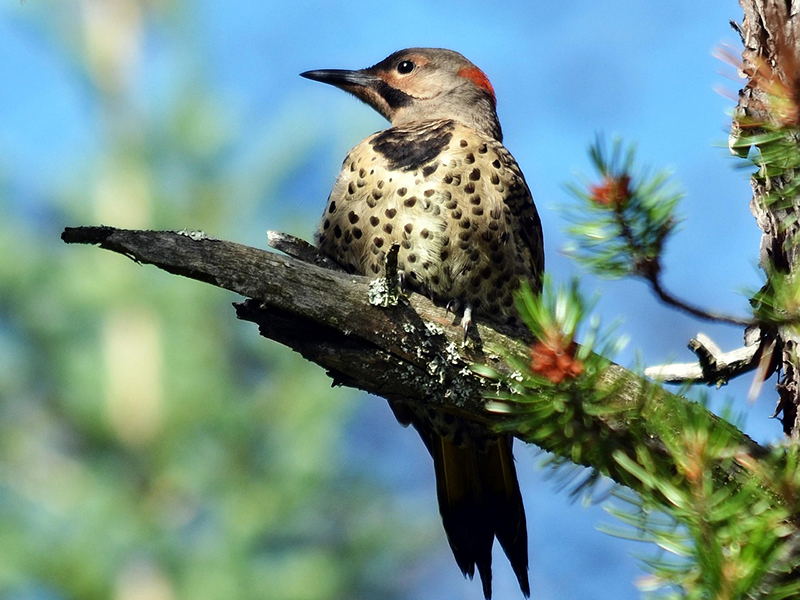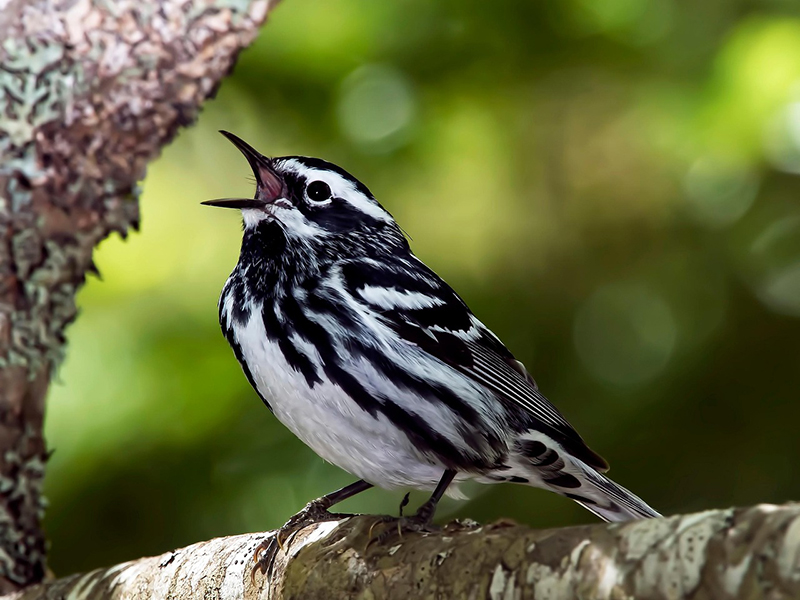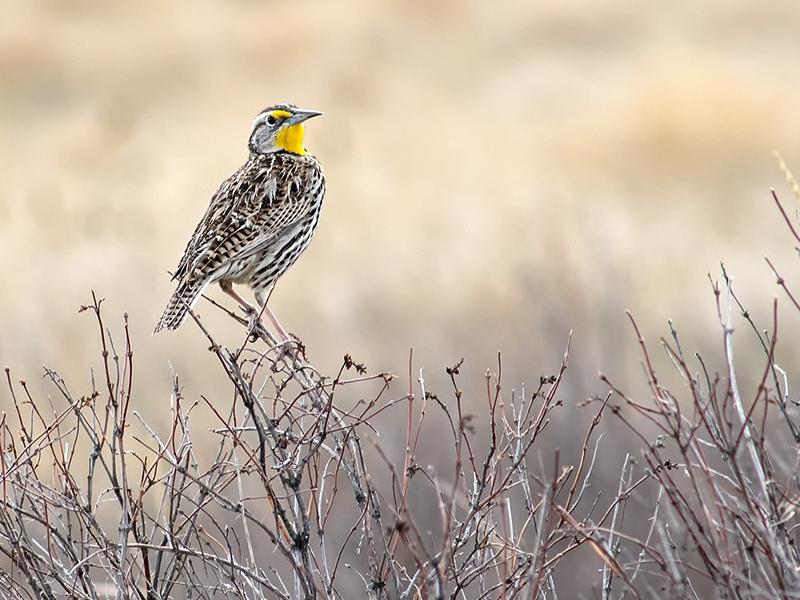
April 01, 2025| Education, Environment
By: Patrick Krudop
Welcome back to another edition of Creature Feature, where we explore the amazing wildlife that thrives in and around Lake Hopatcong and throughout New Jersey! Whether you're a longtime reader or just discovering our posts, feel free to explore past editions that showcase a wide variety of fascinating creatures, whether they be foxes, turtles, or bears. Oh my!
This month, we are excited to introduce an incredible creature that has truly captured the hearts of our team here at the Lake Hopatcong Foundation. Known to those familiar with them as a charismatic and social species, this highly vocal creature thrives in environments where others eagerly respond to their calls. Known to occasionally take dangerous treks to find sustenance, this adaptable species can find the bright side of any situation. Officially classified as Ask-asaurus rex, this determined species has become the dominant force in its environment, excelling in the art of resource gathering.
 |
 |
Meet Caitlin, our Development Director, a skilled and adaptable creature who thrives in the wild world of fundraising and donor relations. Caitlin’s talents are second to none. Whether she’s out in the field, talking to donors on the phone, or strategizing from her desk, her efforts secure much-needed financial support to ensure that we can continue our mission (she'd insist I include that you can donate HERE!). She also enjoys pizza.
APRIL FOOLS!
While Caitlin is certainly a vital part of our team, today’s Creature Feature isn’t about her (as much as we all love her). Instead, we’re shifting our focus to some new visitors in the area that you might start seeing in the coming weeks. In fact, you may have already spotted them… read on to find out what we mean!
As the weather gets warmer (and then colder, and then warmer again!), you start seeing some birds at this time of year that you won’t see at any other point throughout the year. This is because some birds use our beautiful state as a brief stopping point on their longer journey of migration back up to their summer homes. Picture these birds as returning from their annual vacation trip to warmer weather. For some, New Jersey is their home, but for others, it is simply a mid-trip break. After so long on the highway, they, just like us, want to take a moment to pause, stretch their legs (or wings), and maybe load up on some vending machine snacks. New Jersey acts as a great rest stop for these journeys! So, while our air temperatures are still warming up, and the spring flowers have yet to bloom, let's talk about this edition's actual star animals: migratory birds!
Generally, these species of birds, whether they stay in New Jersey for the entire duration of spring and summer, or just treat it as a temporary rest stop, perform this arduous journey of migration for specific reasons. The most common of these reasons is the availability of their food (we must have some pretty good vending machines!). As spring emerges, so too do the insects that these species feast on. But this isn’t the only appealing factor behind traveling thousands of miles each year. Because most birds make similar journeys, traveling back in the spring means a lot of vacant nesting sites. Both of these factors play a pivotal role in the family raising aspect of these birds. More food availability and safer nesting habitats means that most birds can reasonably have a large clutch of eggs, and thus, more offspring. As the saying goes, “the early bird gets the worm... and the nest?”
 |
 |
The Northern Flicker (Colaptes auratus) is the first migrator on our list, and for good reason! These woodpeckers are commonly found across North America, especially around Lake Hopatcong. Unlike most woodpeckers that spend their time on tree bark searching for insects, Northern Flickers are often seen foraging on the ground, using their slightly curved bills to dig for ants and beetles. Their plumage is a mix of browns and blacks, but their most distinctive feature is the flash of bright yellow visible in their wings and tail when they take flight. Some theorize that the flickers of this bright color are how this bird species got its name! They also have a black crescent-shaped marking on their chests and a signature red patch on the nape of their necks (almost like a bandana!).
As a migratory species, Northern Flickers travel south for the winter, with many birds from Canada and the northern U.S. making their way to warmer states. However, some remain in New Jersey year-round, depending on food availability and winter conditions. During migration, they rely on wooded areas and open fields to rest and refuel, often stopping near lakes and forests. Their loud, rolling calls and drumming on trees or metal surfaces make them easy to detect in the spring when they return to their breeding grounds.
 |
 |
The red-eyed vireo (Vireo olivaceus) is a small but persistent songbird commonly found in the forests around Lake Hopatcong during the warmer months. With its olive-green back, pale underside, and distinctive white eyebrow stripe bordered by a dark line, it has no trouble camouflaging into the tree canopy. Despite its subtle appearance, this bird is best recognized by its constant singing—a series of short, melodic phrases that can be heard from dawn to dusk in the summer. True to its name, adult red-eyed vireos have striking red eyes, while juveniles often have brownish eyes until they mature. Though it may appear menacing, this bird poses no threat to anyone, unless you’re an insect!
As a long-distance migratory species, the red-eyed vireo spends its winters in the tropical forests of South America, making an incredible journey each year. They return to the northeastern U.S., including New Jersey, in late spring, filling the woodlands with their ceaseless, chattering song. In fact, one red-eyed vireo was reported to have sung for 10 of the 14 hours it was observed. Talk about persistence! Preferring dense, leafy forests, they build cup-shaped nests high in the trees, where they raise their young during the summer months. Their diet consists mostly of insects during the breeding season, but they also eat berries in preparation for migration.
 |
 |
The Baltimore oriole (Icterus galbula) is one of the most striking migratory birds to visit Lake Hopatcong each spring. Males are instantly recognizable with their brilliant orange plumage, contrasted by a jet-black head and wings, while females usually display a more subdued yellow-orange hue. These orioles are often found high in the treetops, where they forage for insects, nectar, and mainly fruit. They are especially drawn to flowering trees and fruit-bearing plants, and many bird enthusiasts attract them by setting out orange slices. Their whistling, flute-like song adds a bright and cheerful soundtrack to the late spring and summer woodlands. To me, their call sounds like spring!
Baltimore orioles are, of course, neotropical migrants, spending winters in Central and South America before making their way north to breed. They arrive in New Jersey in late April or May, settling in deciduous forests, parks, and backyards with tall trees. Their nests are a marvel of avian engineering, often woven into hanging pouches that are then suspended from thin branches to keep their eggs safe from predators. Who knew migration came with an engineering degree? As summer fades, these orioles prepare for their long journey south by feasting on berries and nectar. Their presence around Lake Hopatcong is only temporary each year, but their beauty is still appreciated by many!
 |
 |
With New Jersey having over 20 species of neotropical migrant warblers, I couldn’t pick just one to focus on today, so instead, let’s talk generally about the various bird species of warblers.
Warblers are a diverse and vibrant group of small, insect-eating songbirds that bring bursts of color and music to the forests around Lake Hopatcong, especially during migration. These tiny birds, often weighing less than an ounce, are known for their energetic movements as they flit through treetops and shrubs in search of insects. Their plumage varies widely, with some species displaying bright yellows, blues, and greens, while others are more subtly patterned in browns and grays. Despite their beauty, warblers can be challenging to spot due to their rapid movements and preference for high branches, but their distinctive songs often give away their presence.
Many warbler species pass through New Jersey in the spring and fall as they migrate between their breeding grounds in the northern forests and their wintering habitats in Central and South America. Some of the most common warblers found around Lake Hopatcong include the yellow warbler, with its golden-yellow feathers and sweet, whistling song, and the black-and-white warbler, which creeps along tree trunks like a miniature woodpecker. The American redstart, with its striking black-and-orange (or black-and-yellow in females) plumage, is another frequent visitor, flashing its bright tail patches to startle insects into flight. Whether stopping for a brief rest during migration or staying to breed, warblers play an essential role in the ecosystem, helping control insect populations and adding a lively energy to the forests each spring.
 |
 |
The eastern meadowlark (Sturnella magna) is a beautifully plumed songbird that brings a splash of color and its rich, flute-like song to the grasslands and open fields around Lake Hopatcong. With its bright yellow underside, bold black "V" across the chest (almost like a tie!), and intricately patterned brown and white back, this bird is well-camouflaged among tall grasses, where it likes to roam. Unlike true larks, eastern meadowlarks belong to the blackbird family, though their melodious song and preference for open habitats set them apart. They are often seen perched on fence posts or singing from low branches, filling the air with their sweet, whistling calls. One way to identify the calls of the eastern meadowlark is to listen for the slurring of the notes in its call. While some birds have distinctive stops between each note they sing, these birds will often blend their notes together!
As partial migrants, some eastern meadowlarks remain in New Jersey year-round, while others move south in search of milder weather. Those that migrate return in early spring, just as fields and meadows begin to bloom. They build their well-hidden nests directly on the ground, weaving dried grasses into a dome-shaped structure to protect their eggs from predators. Their diet consists mainly of insects during the warmer months and seeds in the winter, making them an essential part of the local ecosystem. Sadly, habitat loss has led to declining populations, but protected open spaces around Lake Hopatcong offer them a crucial refuge to nest, forage, and raise their young.
At Lake Hopatcong and throughout New Jersey, you may have the privilege of witnessing the beauty of these birds, even if they are only briefly here. Whether you’re a seasoned naturalist or simply curious about local wildlife, there’s always something new to discover about the fascinating creatures that call Lake Hopatcong home. Every footprint, from the tiniest to the largest, helps shape the vibrant life of our lake, and even the smallest presence can have a big impact.
I hope you’ve enjoyed learning about some of the neotropical migrating bird species we have at Lake Hopatcong. Perhaps this article has inspired you to explore the wonders of nature further, whether by reading a book, visiting a website, or simply stepping outside! If you have any wildlife photos from Lake Hopatcong, or if there’s a critter you’d like to see featured in an upcoming Creature Feature, please send your submissions to info@lakehopatcongfoundation.org. See you next time!

March 09, 2025
Education, Environment

February 10, 2025
Education, Environment

January 06, 2025
Education, Environment